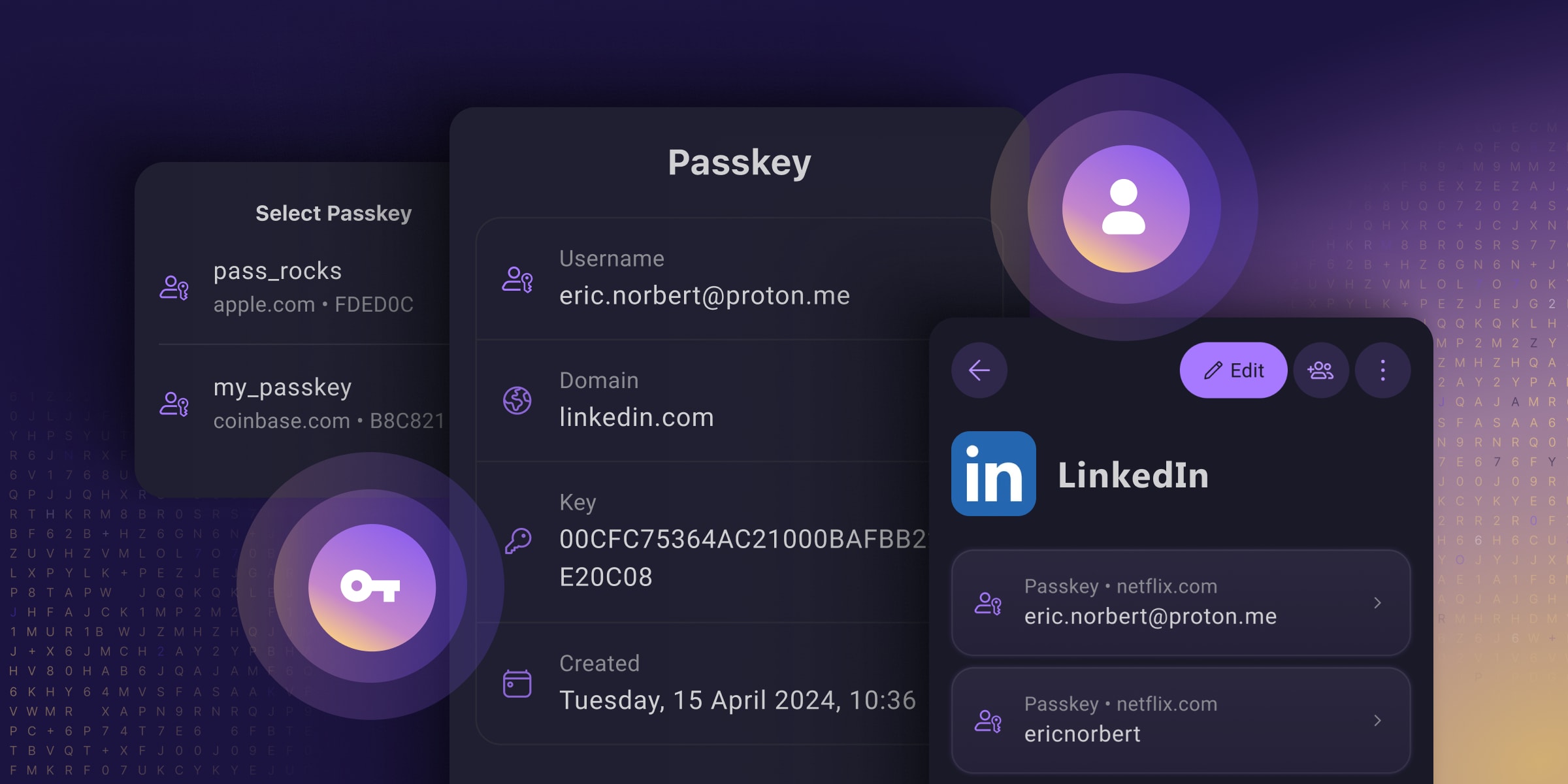Passkeys are an easy and secure alternative to traditional passwords that can help prevent phishing attacks and make your online experience smoother and safer.
Unfortunately, Big Tech’s rollout of this technology prioritized using passkeys to lock people into their walled gardens over providing universal security for everyone (you have to use their platform, which often does not work across all platforms). And many password managers only support passkeys on specific platforms or provide them with paid plans, meaning you only get to reap passkeys’ security benefits if you can afford them.
They’ve reimagined passkeys, helping them reach their full potential as free, universal, and open-source tech. They have made online privacy and security accessible to everyone, regardless of what device you use or your ability to pay.
I’m still a paying customer of Bitwarden as Proton Pass was up to now still not doing everything, but this may make me re-evaluate using Proton Pass as I’m also a paying customer of Proton Pass. It certainly looks like Proton Pass is advancing at quite a pace, and Proton has already built up a good reputation for private e-mail and an excellent VPN client.
Proton is also the ONLY passkey provider that I’ve seen allowing you to store, share, and export passkeys just like you can with passwords!
See https://proton.me/blog/proton-pass-passkeys
#technology #passkeys #security #ProtonPass #opensource



That’s because it’s not 2FA, strictly speaking. The second factor is whatever the device uses to verify you. So, essentially:
You go to a webpage, then go to sign up. Instead of inputting a password, you just input some ID, like a username or email. The device generates a cryptographic handshake with the webpage and your ID. You don’t (can’t, unless you can memorize a string of thousands of letters and numbers and be really good at math with prime numbers) have to remember it.
Now, when you go to login to that page again, the device just remembers and exchanges the keys with the webpage for you. That is NOT 2FA. But, you can configure your device to require another verification (most do). So, when you go to login, then the device asks you to use your fingerprint, or a remembered PIN. Or whatever that confirms that the one handling the device is indeed you before sharing encryption keys with the webpage. This is sorta 2FA, but not really because the webpage is delegating the second factor to the same device actually doing the login. Which might be compromised altogether, but that already happens with most 2FA implementations.
If you go to a second device, and wish to login, then your second device will fallback to other 2FA versions, like sending a OTP to the verified email or phone, or asking you to verify on the one device that is already logged in.